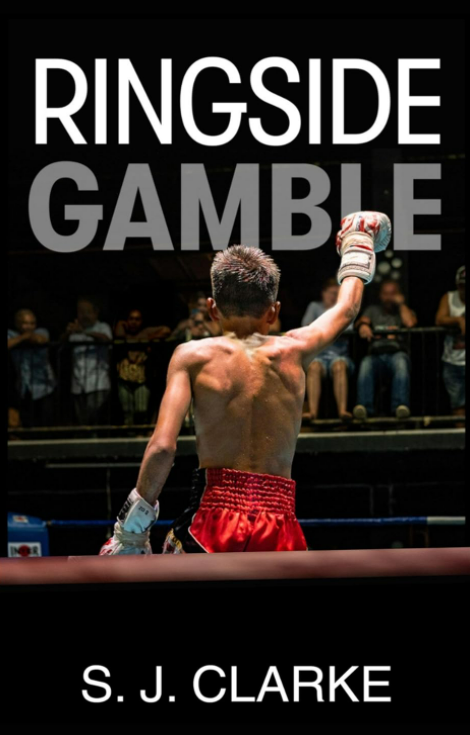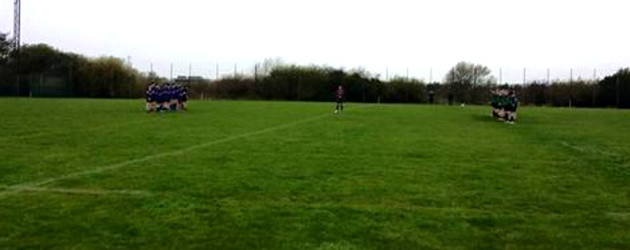Ringside Gamble by S. J. Clarke available in Paperback and Kindle Edition.
Immerse yourself in the thrilling debut novel by acclaimed author S. J. Clarke.
Buy @ :- https://mybook.to/RingsideGamble
Nong, a young Muay Thai boxer, faces the ultimate challenge of realising his dream to compete at Lumpinee, the renowned boxing arena in Bangkok. Set against a backdrop of treacherous friends, temptation, and the harsh reality of poverty, this gripping tale unfolds with a blend of magic and brutal realism, portraying acts of kindness, courage, pain, and bravery that define the world of Muay Thai.
Ringside Gamble has garnered accolades for its authentic depiction of the underworld of Muay Thai and the resilience required to be a fighter. This action-packed novel takes readers on an uplifting journey that lingers long after the final bell rings.
Book Authority (as seen on CNN and Forbes) says, “Ringside Gamble is highly recommended for readers of all ages.”
Interview with S.J. Clarke
Can you share more about Ringside Gamble — characters, plot, themes, world — and what it was like to write it?
Like Slumdog Millionaire, Ringside Gamble tells the story of a small boy born into poverty who has to fight to overcome the odds. Nong has trust in his own destiny and believes he can ultimately win.
On the occasions that he is wracked with doubt and faced with obstacles he feels unable to surmount, his big heart and determination pull him through.
Ringside Gamble is an exciting coming-of-age story that blends the supernatural with the ordinary, as it chronicles a close-knit community’s struggles and triumphs. For the village in which Nong lives, boxing is more than a sport, it is a way of life. Children are asked to fight for their poverty-stricken families. The stakes are high as the prize money changes lives. The young boys and girls have big dreams. Millions are bet on national fights. Gambling syndicates stop at nothing to win.
Within this gritty, fictional world fraught with danger, readers enter the beautiful universe of Nong’s mind and meet the spirits he sees; Tiger, Monkey, Elephant and the tree spirit Lady Ta-Khian. In Ringside Gamble, there are many young contenders, but only one champion emerges.
Tell us about the evocative, powerful opening scenes in Ringside Gamble and how it unravels… without any plot spoilers!
Ringside Gamble starts with a thrilling Muay Thai fight scene. Readers experience a flurry of punches, blocks and roundhouse kicks as 15-year-old Nong battles a rival boxer. Our hero is torn. Joi, Nong’s father relentlessly pushes his son. Gan, his mother, wants her son to focus on school. Nong desperately tries to please both parents. Action-packed scenes follow. Joi worries that corrupt gamblers could bribe Nong into throwing a fight. Gan petitions Abbot
Anuk, head of the forest Wat (temple) to let Nong stay. Here, Nong meets Bhan, who attempts to double-cross him. Next, we enter a forest scene. Children play in the freshwater pools surrounded by ancient trees. Nong swears to protect the forest, and all living creatures to Lady Ta-Khian, a tree spirit. Nong battles his way through regional fights. Crowds applaud his incredible skills and courage. A boxing promoter, Tanawat, arranges for Nong to fight in Bangkok against the fearsome Agung.
The spirits warn Nong against fighting as his path is fraught with danger, but he ignores their advice, and the whole village bets on Nong winning his next fight. Then, disaster strikes, as foreseen by the spirits. Nong lies in bed, heartbroken. The spirits come to his rescue. Courage and renewed hope replace doubt and despair. A rematch follows. A battered bus drives Nong’s family and friends over eight-hundred kilometers to the national stadium in Bangkok, Thailand where Nong will battle Agung. There is a final showdown. Before the night is over, a new champion will be crowned and a bloody murder uncovered.
What role did your experiences with Muay Thai and your travels to Thailand play in shaping the narrative; that’s a very cool sport to have as part of your fitness repertoire?
I have studied Muay Thai for 12 years and what began as a fitness regimen became an obsession. I wanted to share the extraordinary hidden world of this incredible martial art.
Muay Thai, also known as Thai boxing, is a full-contact combat sport that uses stand-up striking, sweeps, and various clinching techniques.
This discipline is known as the ‘Art of Eight Limbs,’ as it is characterised by the combined use of fists, elbows, knees and shins.
Whether training with Chanchai Sor Tamarangsri or Aphidet Chaithet, at BXG Boxing in Singapore, amongst many other incredible athletes, I would ask technical, cultural and strategic advice to understand how this thirteenth century sport functions.
What was it like for you to learn the sport?
The first time I trained I retched. The heat, the stress the sport places on the body, and the sheer physicality of it was overwhelming. I trained five times a week after work. The head trainer Chaithet would walk into the gym and turn off the air-conditioning; here in humid Singapore. I never left without bruises. So much of Muay Thai is about desensitising from the pain. In the past boxers would toughen up
their shins by kicking banana trees.
What sort of influence did Muay Thai have on the plot?
A key idea in_ Ringside Gamble_ that was sparked by Muay Thai boxing was the introduction of the forest spirit animals and Lady Ta-Khian. These characters were inspired by the _Sak Yant_ (tattoos) that Thai boxers carry for protection and as a reminder of virtues they wish to embody. In the novel, the forest spirits, Elephant, Monkey and Tiger are Nong’s imaginary friends. They are his confidants, irritants and sources of laughter. Lady Ta-Khian is a powerful tree spirit. She is volatile and dangerous. Alongside the other fantastical creatures, she guides Nong during his darkest times.
The Sak Yant is a traditional Thai form of tattooing, involving sacred geometrical designs. These tattoos are intricate, often drawn by a Monk, and each element will have a specific meaning for the wearer.
Like many boxers, Chaithet has a Suea Hiaw lang, or ‘tiger looking back’ Sak Yant, which represents protection from behind or having the Tiger watch your back. Most of the animal Sak Yant have a special significance; the tiger has stealth, speed and power and is suitable for people with authority and respect. As well as giving the bearer a fearful aura, it also represents compassion and kindness.
This tattoo requires that the wearer must be a responsible and caring person and use their authority in a positive way. Tiger in Ringside Gamble embodies this spirit. She is both fearsome and compassionate,
deadly and kind. I have also seen Monkey and Elephant _Sak Yant, but for boxers, the Tiger is more popular. (https://sakyantchiangmai.com/sak-yant-designs-and-meanings/)
How did your years of training in Muay Thai shape your understanding of the sport and its cultural significance in Thailand?
I discovered Thai boxing when I moved to Singapore in 2011 and have been a student of this incredible Martial art ever since. Muay Thai is strategically complex and is fought like a game of Chinese Go. Rather like a PhD student, I researched for several years before I began writing my novel. Not being able to find books on Muay Thai at the National Library in Singapore, or my local one, I set about
interviewing boxers, instructors and people with a connection to the sport.
I had the honour of being taught the Wai Khru Ram Muay, the pre-fight dance ritual by Chanchai Sor in Khao Lak, Thailand (https://youtu.be/n45xapmegA00). Tracing back to the ancient roots of Thailand, Muay Thai wasn’t only a form of combat but also a fundamental part of society, deeply intertwined with religious beliefs and cultural practices. In the early days, fighters often asked for blessings and protection from the monks before battles. This practice gradually evolved into the formalised ceremony known as Wai Khru, and as the practice of Muay Thai advanced from battlefield tactics to a sport, the spiritual aspects of the pre-fight dance_ _remained an integral part. For some, the dance transitioned from a connection with spirits to a connection with teachers and trainers, while for others, especially practitioners of Buddhism, the spiritual connection remains.
Nong faces significant challenges including poverty. How do such obstacles mirror the realities of life in Thailand, particularly for those involved in Muay Thai, from what you’ve witnessed?
In high season, from November to March, a monthly family income is around $500 and less than half that for the rest of the year. The majority of Muay Thai fighters do not earn a high salary and accept as many fights as they can. It is not unusual to compete every fortnight. Most of the trainers at the Muay Thai gym have fought 250 fights, at least, between them. A mid-ranked fighter might make around 6,000 baht per month. Top-level fighters more at around 12,000 baht a month, equating to around $370. Typically, children become boxers because their families need the money. Life is hard and gamblers often offer
boxers money in exchange for throwing a fight.
For readers who may not be familiar with Muay Thai or Thai culture, what do you hope they’ll take away from Nong’s story?
My hope is for readers to gain insights into this world, outside of the ring, at a time when the sport is moving in the direction of appealing to Western audiences. For example, broadcasting companies are pushing to cut cultural aspects of Muay Thai, such as the pre-fight dance, because it makes for better television to only film the boxing matches.
One of the lessons learnt from writing my novel is how people see my work so differently. Some people mention the fight scenes as highlights of the novel, whereas others enjoy the food descriptions or magical realism aspects. Animism exists in Thailand. In the rural areas it is common to see spirit houses in the front yards, with offerings and representations of spirits. The spirits serve to remind readers that Nong is a young boy fighting in an adult world to overcome the poverty his family faces. It is for the reader to decide how to interpret their existence. I hope readers gain a better understanding of the richness of Muay Thai and its impact on rural communities, than they would from visiting a boxing match on vacation.
The extraordinary people fighting against extraordinary circumstances are invisible and I want to share the story outside of the boxing ring.
Ringside Gamble has been praised for its authentic depiction of Muay Thai. What does this recognition mean to you, especially as a debut novelist?
I scoured the world for books on the art of Muay Thai and engaged in such extensive research that my manuscript draft was encyclopedic. My first draft was 150,000 words. The second draft 110,000 words and the final book 95,000 words. The manuscript was continually cut and revised until my make-believe tale was a story that did not waver into the realms of art history research, the folkloric history of Thailand,
socio-economic politics and the ancient art of Muay Thai. I am delighted that the extensive research is being met with such praise.
After so many years of training in Thai boxing, what personal connection do you have with Muay Thai, and how does it continue to influence both your life and your work?
At Rawai Boxing Camp, copies of my book are sold, and the profits go to buying children’s school equipment, books and clothing. When I started training, I spent a year with bruised shins, elbows and thighs, as I honed my skills in this incredibly difficult sport, which punishes you when you do not focus. On my frequent travels to Thailand, I followed a similar training routine as the professional fighters, mostly in Khao Lak. I also studied in Kho Lanta and Chiang Mai. Training in the tropical, humid, dusty heat is hard, and yet good fun, as well as immensely rewarding. When you join a boxing camp, you
become part of a community that is encouraging, engaging and eager to educate.
Muay Thai teaches you that you need to remain calm and stand your ground whatever life throws at you. Losing your temper is viewed poorly and the ability to maintain control of yourself praised. The philosophy behind Muay Thai urges you to honour teachers and your mentors. Ringside Gamble is dedicated to “those who teach.”
Professional fighters are superb athletes and judges of movement. They can accurately predict the direction a body moves from muscle memory and by focusing on the chest area of their opponent, their peripheral vision anticipates attacks approaching from the left or right. If you ever have the opportunity to discuss ‘owning space’ with a Muay Thai fighter I suggest you do so. It is fascinating to understand how useful their take is when considering how best to manage threatening behaviour in the boardroom and beyond!




